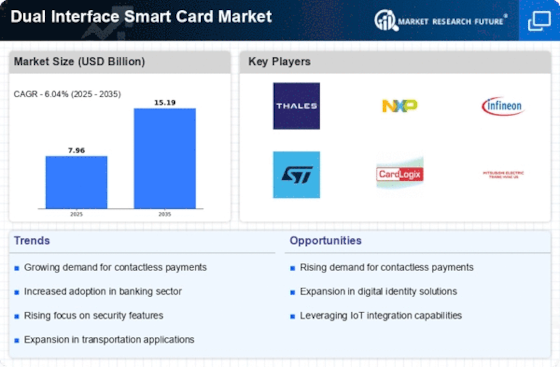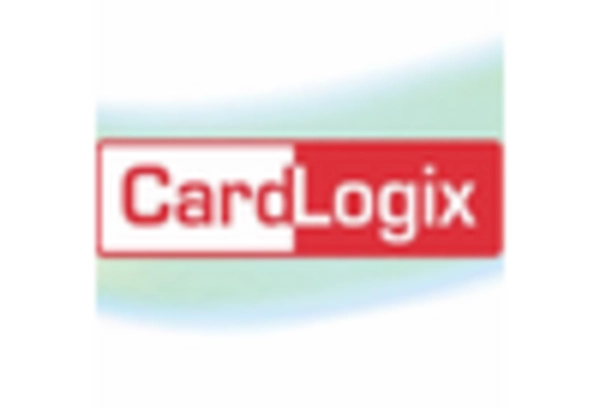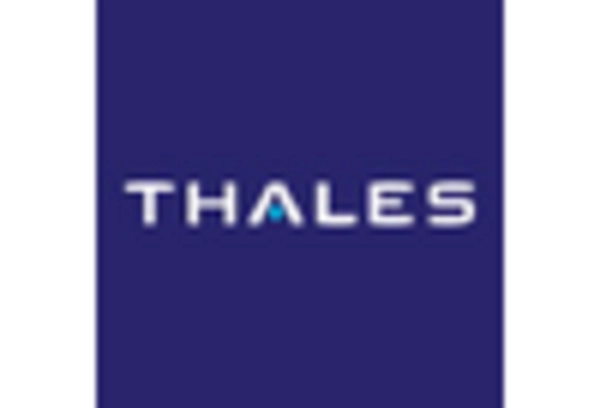Regulatory Support for Secure Transactions
Regulatory frameworks aimed at enhancing transaction security are significantly influencing the Dual Interface Smart Card Market. Governments and financial authorities are increasingly mandating the use of secure payment methods to combat fraud and enhance consumer protection. For instance, regulations that require two-factor authentication for online transactions are driving the need for smart cards that can support such features. This regulatory push is expected to bolster the market, as businesses seek to comply with these standards while providing secure payment options. The dual interface smart cards, which combine both chip and contactless technology, are well-positioned to meet these regulatory requirements, thus fostering growth in the Dual Interface Smart Card Market.
Expansion of E-commerce and Online Services
The rapid expansion of e-commerce and online services is significantly impacting the Dual Interface Smart Card Market. As more consumers turn to online shopping and digital services, the need for secure and efficient payment methods has never been greater. Dual interface smart cards facilitate seamless transactions, catering to the needs of both in-store and online shoppers. Recent statistics suggest that e-commerce sales are expected to reach trillions of dollars in the coming years, creating a substantial market opportunity for smart card providers. This trend is likely to drive innovation and investment in dual interface technology, as businesses strive to meet the evolving demands of consumers in the digital marketplace.
Growing Adoption of Digital Payment Solutions
The increasing shift towards digital payment solutions is a primary driver for the Dual Interface Smart Card Market. As consumers and businesses alike embrace cashless transactions, the demand for smart cards that facilitate both contact and contactless payments is surging. According to recent data, the digital payment sector is projected to grow at a compound annual growth rate of over 15% in the coming years. This trend is likely to propel the adoption of dual interface smart cards, which offer the convenience of quick transactions without compromising security. Financial institutions are investing heavily in this technology to enhance customer experience, thereby further stimulating the Dual Interface Smart Card Market.
Rising Consumer Awareness of Security Features
Consumer awareness regarding the importance of security in financial transactions is a significant driver for the Dual Interface Smart Card Market. As data breaches and cyber threats become more prevalent, consumers are increasingly seeking payment solutions that offer enhanced security features. Dual interface smart cards, which provide both contact and contactless payment options, are perceived as safer alternatives due to their advanced encryption and authentication capabilities. Market Research Future indicates that consumers are willing to pay a premium for cards that offer superior security, thereby driving demand. This heightened awareness is likely to continue influencing purchasing decisions, further propelling the growth of the Dual Interface Smart Card Market.
Technological Advancements in Card Manufacturing
Technological innovations in card manufacturing are playing a crucial role in the expansion of the Dual Interface Smart Card Market. Advances in materials and production techniques have led to the development of more durable and efficient smart cards. For example, the introduction of thinner and more flexible materials allows for enhanced design and functionality. Additionally, the integration of advanced security features, such as biometric authentication, is becoming more prevalent. These advancements not only improve the user experience but also reduce production costs, making dual interface smart cards more accessible to a wider range of consumers and businesses. As a result, the market is likely to witness increased adoption driven by these technological improvements.
















Leave a Comment